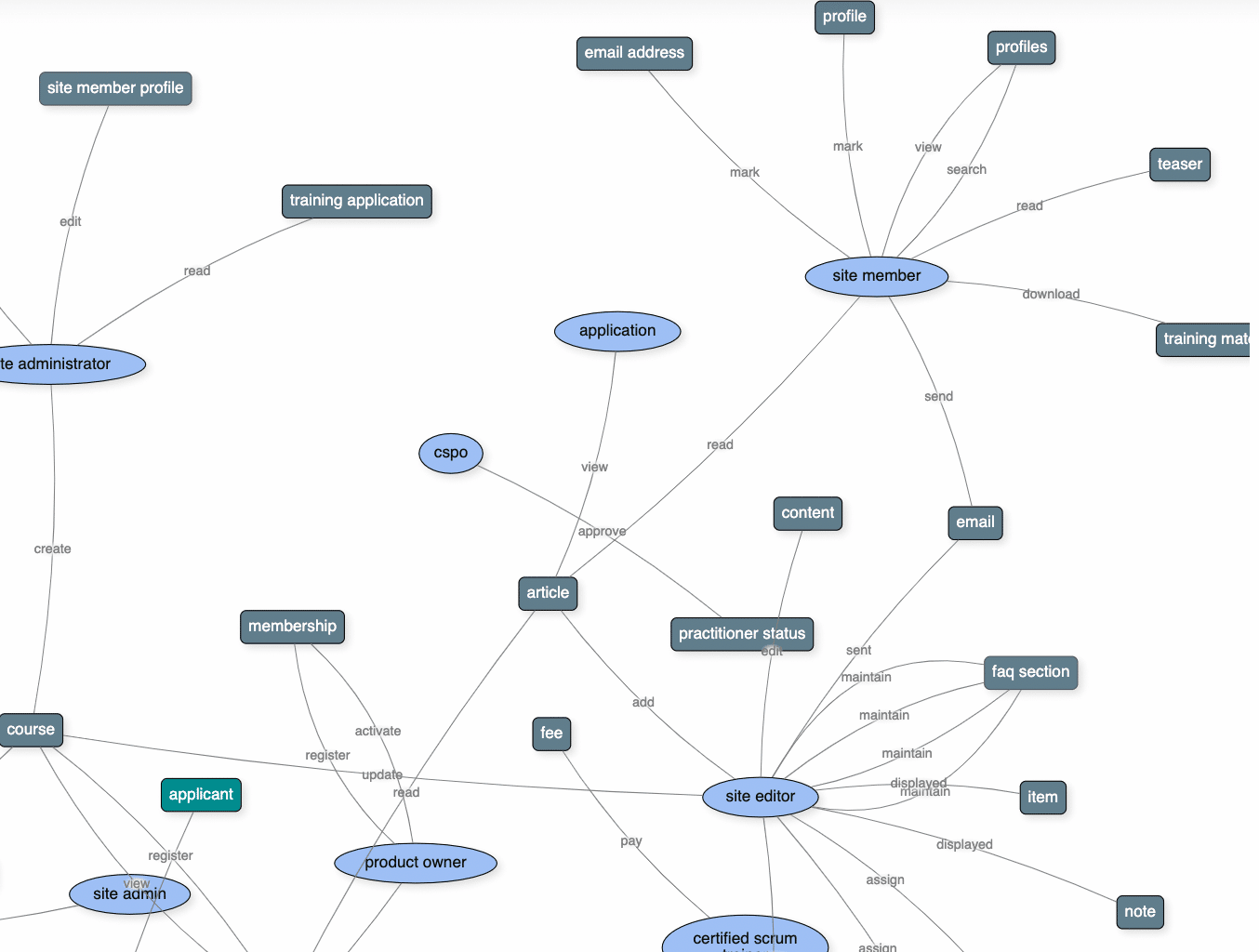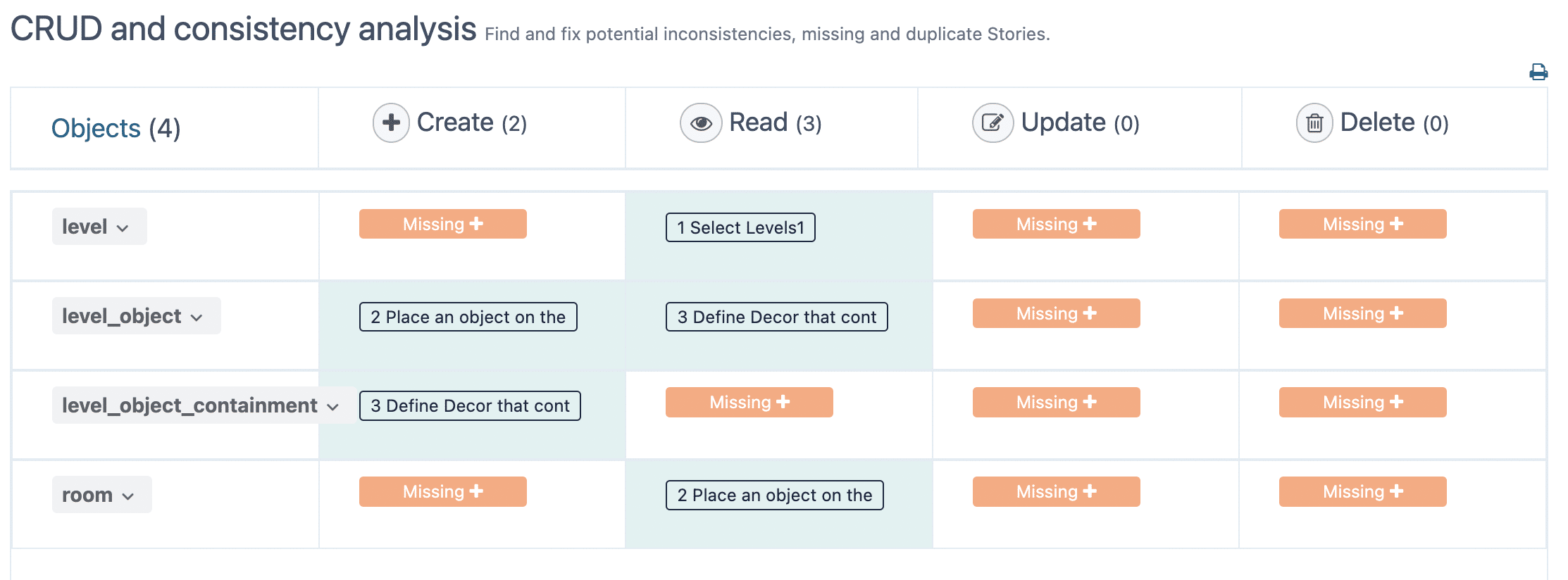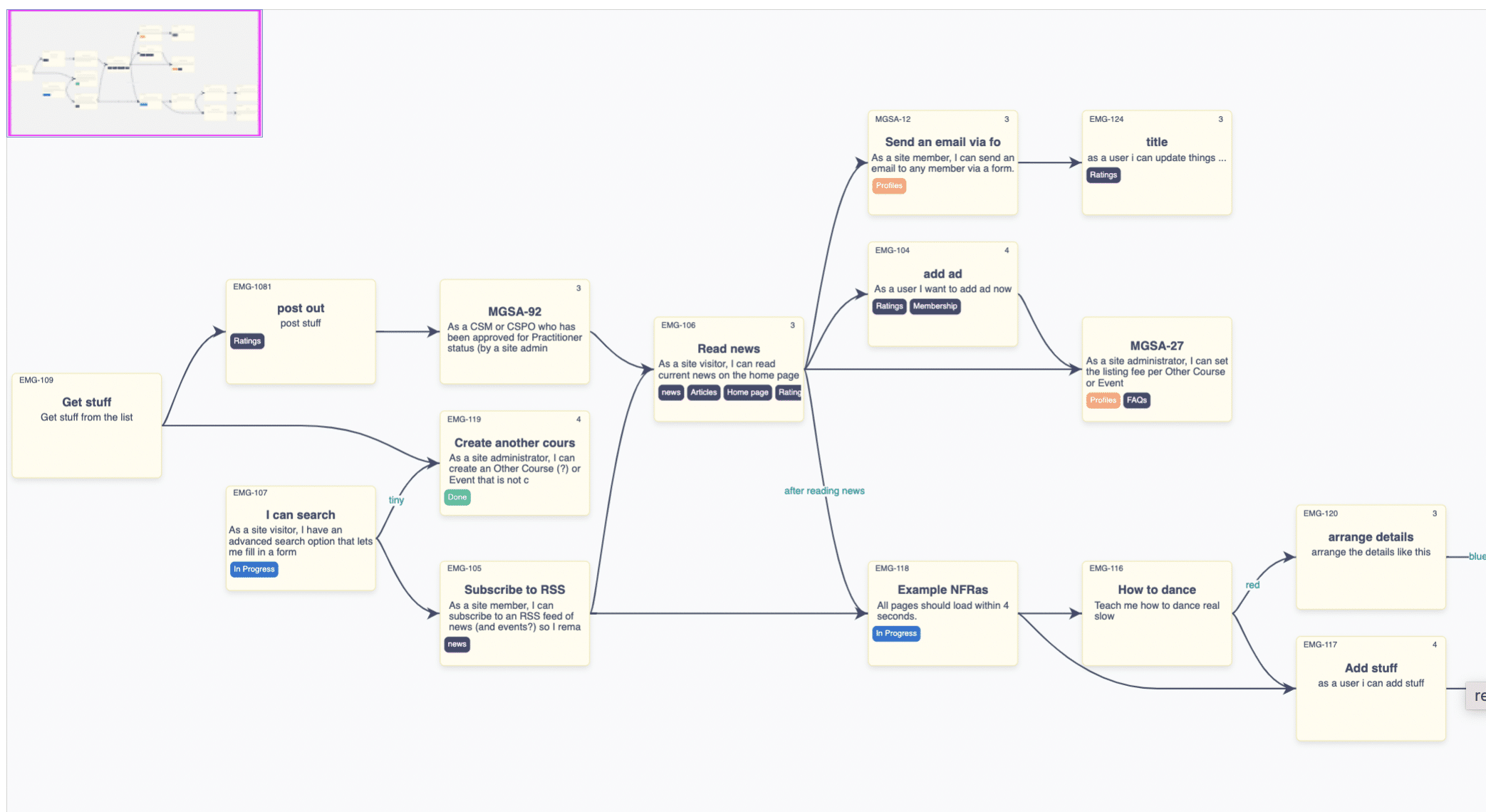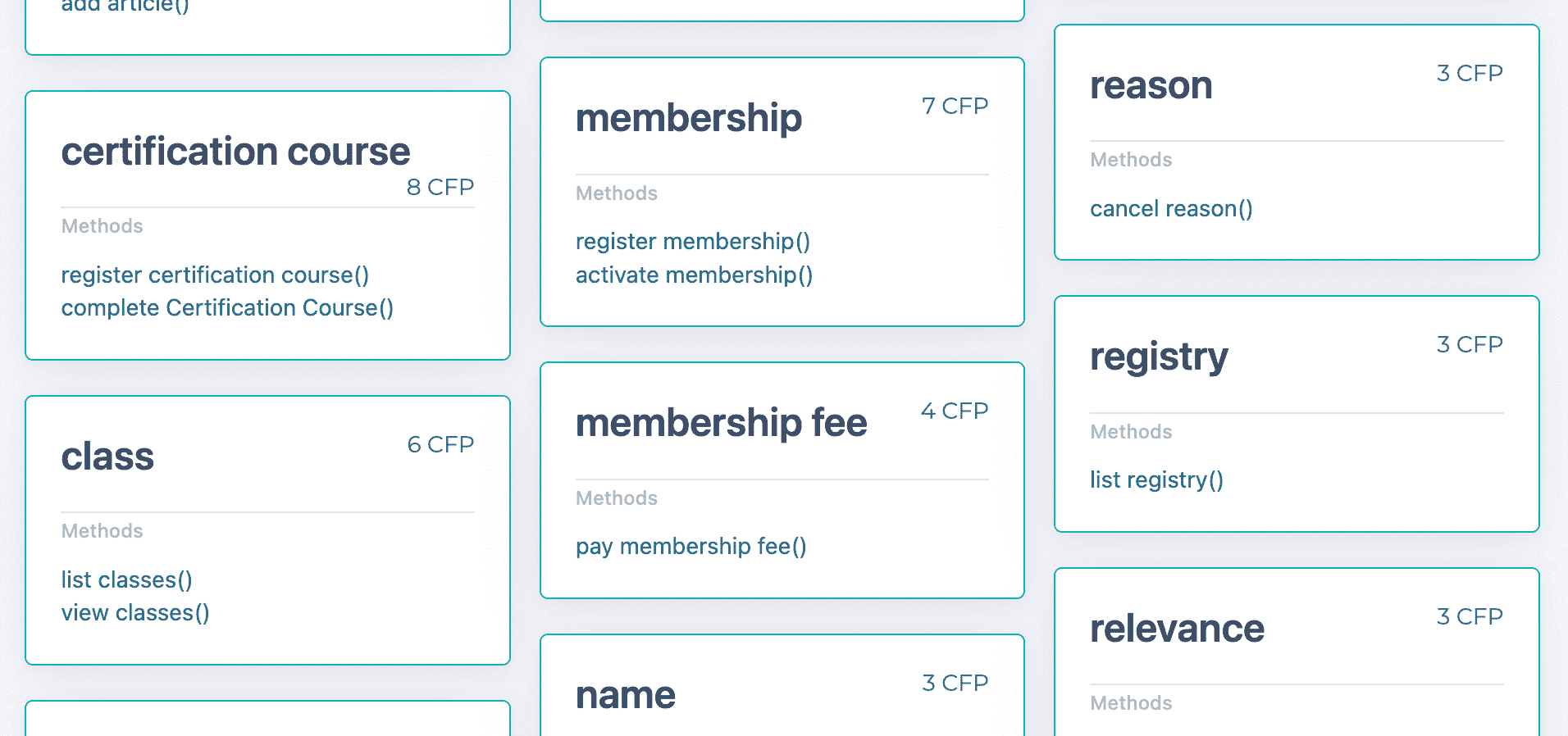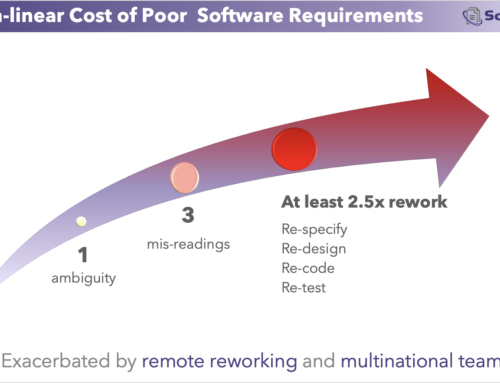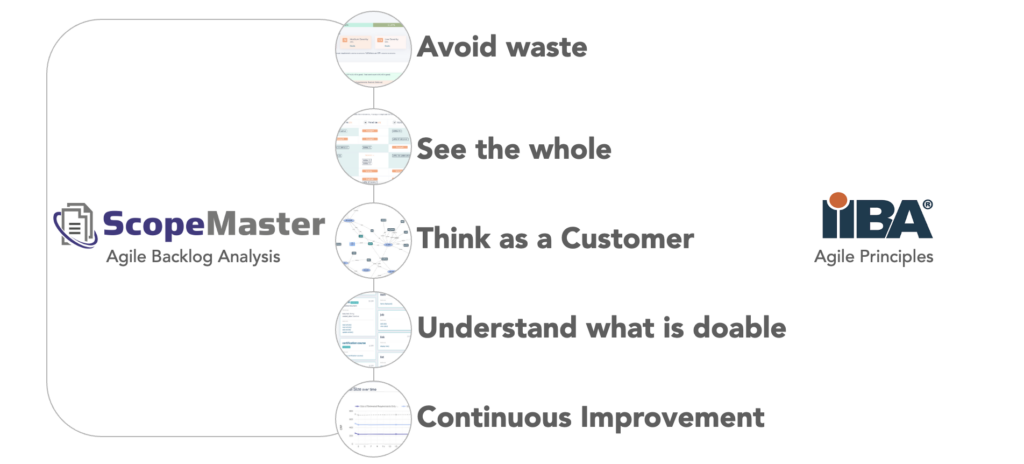
ScopeMaster can help increase adoption of many of the seven business analysis principles for agile software work,
The Seven Business Analysis Principles for Agile
The IIBA’s Agile Extension to the BABOK® Guide presents seven Business Analysis principles for Agile work:
- See the whole.
- Think as a customer.
- Analyze to determine what is valuable.
- Get real using examples.
- Understand what is doable.
- Stimulate collaboration and continuous improvement.
- Avoid waste.
In this article we show how closely ScopeMaster directly facilitates these seven principles of Agile thinking of the business analyst.
1. See the Whole
ScopeMaster strongly supports the principle of “see the whole”. unlike any other requirements tool, ScopeMaster provides visual overviews of sets of user stories. Not only does it analyse individual user stories, but also and sets of them. It’s unique ability to provide visualisations (use case model, crud matrix, name consistency cloud and class diagram) across sets of requirements stimulates the BA’s ability to see the whole.
2 Think as a Customer
ScopeMaster detects users within users stories. It encourages the BA to ensure that all user stories have a named user. Furthermore it helps encourage consistency of naming users across a set of user stories. It also allows for custom naming of users, including users that are actually connected systems.
3 Analyse to Determine What is Valuable
ScopeMaster does not specifically automate the determination of value. However it does help you make sound decisions about scope and project that will help prioritise work that is valuable. The value tracer helps you trace user stories back to value business outcomes. It can also help with user story prioritisation through its tracking of WSJF.
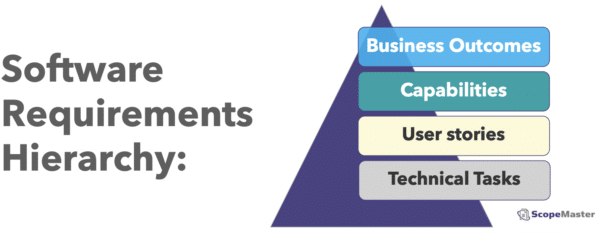
Focus on Value
Requirements value traceability
4. Get Real Using Examples
Nothing specific.
5 Understand what is doable
ScopeMaster helps to support this principle in several ways:
- By auto-detecting functionality, it exposes what needs to be done.
- The auto-generated class diagram accelerates the “is this do-able” conversations with designers.
- By giving an holistic understanding of scope, BA’s can target the doable parts.
Stimulate Collaboration and Continuous Improvement
Stimulate Collaboration
ScopeMaster provides many visualisations of sets of requirements that can be used as aids to collaborative interpretation and communication both with user stakeholders and with those on the delivery side.
ScopeMaster also facilitates collaboration through commenting and sharing features.
Continuous Improvement
ScopeMaster helps in several ways:
- Quality feedback on individual user stories, teaches junior BAs rapidly to improve the quality of their user stories, this is immediate.
- ScopeMaster stimulates healthy conversations and disciplines (clarity, brevity, completeness) about requirements that encourage teams to think about requirements, quality.
Avoid Waste
Perhaps the biggest waste on IT projects comes from doing the wrong the work. The second biggest waste is having to redo work because the requirements were not communicated adequately. ScopeMaster is extremely effective at helping the BA get the requirements right quickly. The typical project may have 30-50% rework, which is mostly down to poor requirements. ScopeMaster can usually halve this problem within a few weeks of using it.
- Reduce rework
- Check quality earlier
- Shorten wasteful meetings
- Find problems faster
- Fix problems faster
Conclusion
We have show with examples exactly how ScopeMaster facilitates, and in some cases automates the IIBA’s seven Agile business analysis principles. By using ScopeMaster to analyse and refine user stories as a BA you can accelerate your adoption and pursuit of these principles of business analysis.

